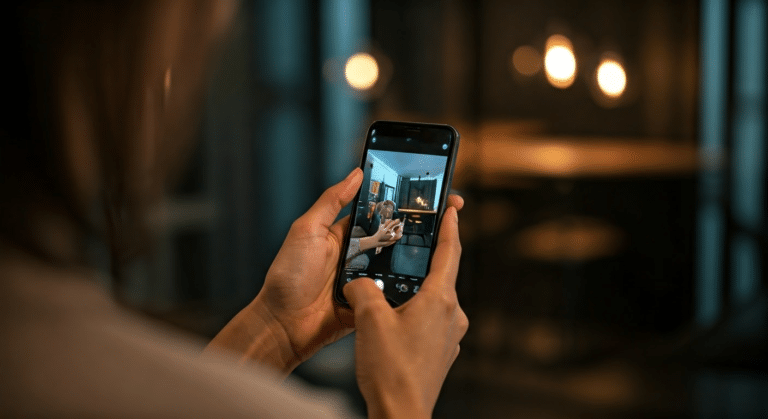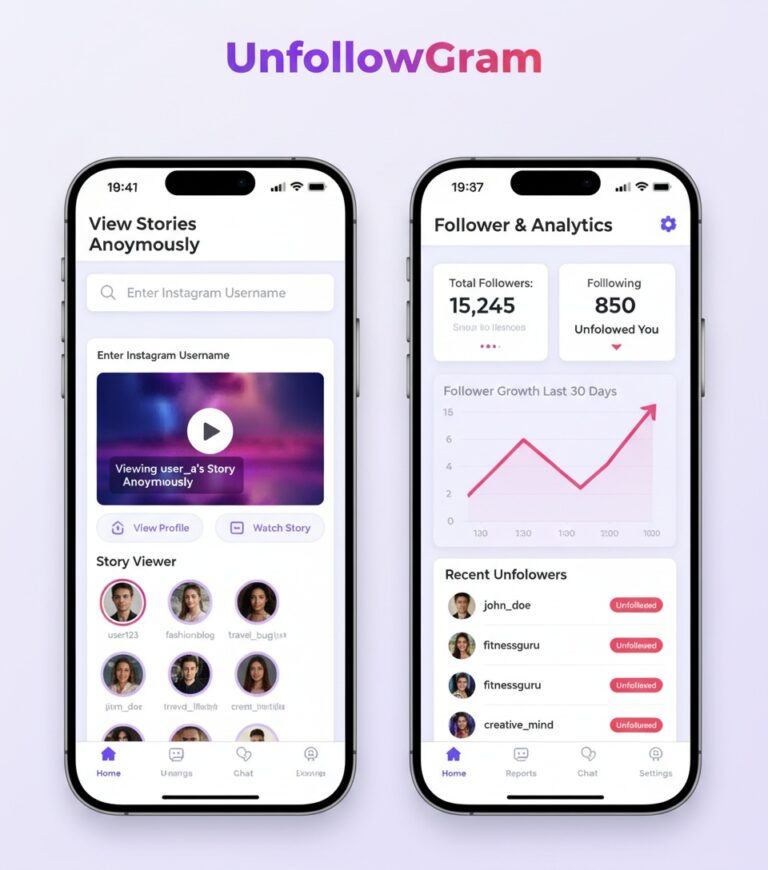Who Unfollowed Me Twitter: Advanced Techniques
Last Updated on March 2, 2025 by Ethan Reynolds
Have you ever wondered why it’s so challenging to figure out who unfollowed me on Twitter? In my experience, keeping track of recent unfollows can feel like chasing shadows. With the fast-paced nature of social media, maintaining an engaged follower list is crucial. Yet, the question remains: how many people are actually keeping track of these dynamics? Understanding this can help us better manage our online presence and interactions. Unfollowers
I’ve explored several tools that offer the ability to access detailed analytics about follower changes. One sample tool I tried provided insights into user behavior, which was enlightening. Monitoring who comes and goes in our digital circles can be overwhelming, but it’s a necessary step to ensure engagement. This article will explore various strategies and tools to efficiently track unfollowers, ensuring you stay connected with your most engaged audience. Let’s dive into the details.
Understanding the Basics of Twitter Follower Dynamics
Modern studies demonstrate the crucial nature of followers on Twitter as they represent more than just numbers. They indicate engagement, interest, and influence. Analyzing how many followers one has provides insights into social media presence. But what happens when someone is unfollowed? This leads us to explore reasons users might choose to unfollow. Read more: Who Unfollowed Me On Twitter Techniques For Finding Out.
People unfollow for various reasons. Some might unfollow due to content fatigue, while others might not find the content relevant anymore. This decision impacts the follower count significantly. Losing followers can decrease engagement and reach, affecting how your content performs on the platform. Instagram Story Viewer.
Building on this, understanding the emotional and strategic implications of changes in follower count is essential. I’ve noticed that when I actively follow trends and engage with followers, the dynamics shift. It’s vital to analyze patterns in follows and unfollows to tailor your content strategy effectively. Unfollowers Instagram
The service of tracking these changes isn’t just about numbers; it’s about improving engagement and understanding your audience better. In my experience, using tools to analyze follower patterns on social media helps in crafting more targeted content. This naturally brings us to consider how we can enhance interaction strategies. Who Unfollowed Me.
Finally, to answer the common question of how to maintain a healthy follower count, one must focus on genuine interaction and consistent content delivery. It’s not just about who unfollowed but also about how you can better serve your audience. When you tap into the right strategies, your Twitter engagement can thrive.
Tools to Track Unfollowers on Twitter
Recent studies reveal that tracking unfollowers on formerly Twitter, now X, can be pivotal for maintaining an engaged audience. A variety of apps make this task manageable, each with unique features and benefits. I’ve tested several tools, and here are my insights. Read more: Unfollowerstats Alternative Solutions To Twitter Tools In 2023.
Crowdfire is a robust tool that offers more than just unfollower tracking. It provides analytics dashboards that help users understand their follower dynamics. The app also suggests content to keep your audience engaged. However, some features come at a cost, which might be a limitation for some users. Unfollow App
Unfollower Stats is another app worth considering. It’s straightforward and focuses primarily on tracking unfollowers. This simplicity can be an advantage for those who want a no-frills approach. The website is easy to navigate, and all the accounts you manage can be monitored from one place. Instagram Story Viewer.
X Twitter analytics, formerly Twitter’s native tool, offers insights directly linked to your Twitter account. It’s perfect for users who prefer staying within the platform itself. The analytics can identify new followers and those who have disengaged, helping you strategize effectively.
These tools not only help track unfollowers but also assist in building a more engaged community. Whether you’re looking for comprehensive analytics or a simple unfollower tracking app, these options provide solutions that cater to different needs and budgets. Each tool has its own strengths, so choosing the right one depends on your specific requirements.
Ultimately, managing your follower list is crucial for growth. As you explore these tools, consider what aligns best with your goals. The right app will help you maintain a healthy and engaged Twitter account. Nature Captions For Instagram
Latest Insights and Developments
Staying updated on who unfollows you on Twitter can provide valuable insights into your social media strategy. In 2025, various tools and studies have emerged to help users understand and manage their follower dynamics better. Unfollow.
Key Research Findings
Recent studies have revealed several crucial insights about unfollowing trends on Twitter:
- Users often unfollow accounts due to excessive promotional content.
- Lack of engagement is a primary reason for users to hit the unfollow button.
- Consistency in posting relevant content retains followers effectively.
Important Statistics
Data from 2025 highlights the scale and impact of unfollowing behavior:
- Approximately 30% of users unfollow inactive accounts monthly.
- Accounts posting daily see a 20% lower unfollow rate compared to less frequent posters.
- Over 50% of users unfollow brands that do not respond to their tweets.
Latest Developments
Recent advancements and tools are reshaping how users track unfollows: Mass Unfollow Instagram
- New AI-powered tools offer real-time unfollow alerts and analytics.
- Integration with Twitter’s API has improved accuracy in tracking unfollow events.
- Enhanced privacy settings allow users to manage their follow lists more effectively.
Understanding the dynamics of unfollowing can significantly enhance user engagement and content strategy.
How to Effectively Use Unfollower Tracking Tools
The question many ask is how to effectively figure out who unfollowed me on Twitter. To get started, you’ll want to integrate a reliable tool to track unfollowers. Setting up such a tool involves a few straightforward steps. How To Mass Unfollow On Instagram.
- First, sign up for a trusted unfollower tracking service. Ensure you choose one that fits your needs and offers a user-friendly dashboard.
- Next, connect your Twitter account to it. This usually involves authorizing the app with Twitter, allowing it to access your follower data.
- Once linked, navigate to the main dashboard. Here, you’ll find analytics that provide insights into your follower dynamics.
Interpreting the data these tools provide is crucial. The analytics offer a clear view of patterns, helping you understand why you might be losing followers. For example, a sudden drop could signal a need to adjust your content strategy. One way to maintain a healthy follower list is to regularly review this data. This practice ensures you’re consistently aligned with your audience’s interests. Instagram Unfollow App
To further enhance your strategy, consider the context of the unfollows. Are they related to specific posts or periods? This insight can be a powerful sign of what content resonates or repels. Moreover, maintaining an engaged list is not just about numbers but about meaningful connections.
Remember, the page you use to track this data is your gateway to understanding Twitter unfollowers. It’s a tool that not only shows numbers but tells a story of your account’s journey. With the right approach, these tools are invaluable in crafting a successful social media presence.
Analyzing Unfollower Data for Better Engagement
New research indicates that understanding the nuances of unfollower stats on Twitter can significantly enhance your social media strategy. By diving deep into the data, we can identify patterns and gain valuable insights. For instance, if certain tweets consistently lose followers, it might be time to adjust your content approach.
To make the most of this data, I recommend focusing on three key areas. First, analyze unfollower stats and history to understand what might have caused a drop. Did this happen after a specific tweet or campaign? These insights can guide future strategies. Second, increase follower engagement by refining your content. Engaging tweets that spark conversations tend to retain followers better.
Additionally, preventing mass Unfollow events is crucial. This means regularly assessing the content you post and ensuring it resonates with your audience. Twitter offers many free tools that allow you to track and analyze your tweets’ performance, offering a clear picture of what works.
Building on this, maintaining an open line of communication with followers is beneficial. Responding promptly to messages and creating engaging posts can help foster a loyal community. Furthermore, using Twitter’s analytics provides insights into which tweets resonate most, allowing for a more targeted approach.
Fortunately, with these strategies in place, you’ll have gained a robust framework for improving your Twitter presence. This approach not only helps in minimizing lost followers but also enhances overall engagement. As you refine these methods, you’ll notice a significant improvement in how your Twitter community responds and grows.
Ethan (co-founder) is a seasoned social media marketing strategist with over a decade of experience in digital branding, audience growth, and engagement strategies. He holds a Bachelor's degree in Marketing and has earned multiple certifications, including the Meta Certified Digital Marketing.
Ethan has worked with global brands to refine their social media presence, leveraging data-driven insights and cutting-edge strategies to optimize engagement and retention. As the founder of a boutique social media consultancy, he has helped influencers, businesses, and startups scale their online presence organically. He is also a frequent contributor to industry publications and a speaker at digital marketing conferences.








